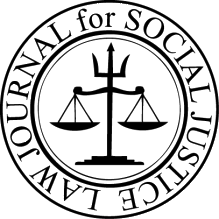Energy Poverty is a Global Problem
by Nicole Fries, 2L, Arizona State University
In his recently released book, The Moral Challenge of Dangerous Climate Change; Values, Poverty, and Policy, Professor Darrel Moellendorf addresses how energy poverty will prevent any discernable change toward a cleaner environment.[1] According to Prof. Moellendorf, 1.4 billion people around the world still lack electricity. Including those individuals, 2.7 billion people still burn biomass as their main source of energy. That includes everything from plant matter and wood to animal matter, which is the largest source of bio-energy in Africa. These sources of energy are not as detrimental to the atmosphere as coal-burning might be, yet they are tremendously hazardous to the health of the individuals living in these locations because of their extremely high rate of indoor air pollution. This above average reliance on bio-mass as an energy source is defined as energy poverty.
However, Prof. Moellendorf also introduces what he called the anti-poverty principle for climate change; that policies and institutions should not impose avoidable costs of climate change on the global poor if it will make poverty eradication more difficult.[2] The premise of his book is that climate change has traditionally been a first world problem because the struggle for survival has prevented any poorer countries from taking part. As the levels of the world’s carbon emissions only rise, there is pressure from the G8[3] for poorer countries to meet these energy goals too.[4] But is that just? These countries that are world leaders have made little headway on their UN Millennium Development Goal to halve extreme poverty around the world by 2015.[5]
The African Union has attempted to assist the poorer countries among them by creating a plan to diversify energy on the continent.[6] Michelle Barnard suggests that a successful shift to nuclear energy in the region will only work if a regional management organization is set up to regulate. It also seems likely that nuclear energy development in Africa, or other similar regions around the world with high levels of energy poverty, will only succeed if funding is pooled on a regional basis to make development happen.
Moellendorf suggests instead that climate change policy is dangerous insofar as it imposes costs that make poverty eradication slower, putting undue burdens on poorer countries that don’t have available alternatives. He argues that organizations such as UNFCCC should, by necessity, align their goals with those of reducing poverty because otherwise they will unduly burden countries with high rates of energy poverty.
Yet how can the United States attempt to lead these restructured energy goals when nearly 15% of US utility customers live in fuel poverty.[7] Due to the federal nature of many poverty assistance programs, states and municipalities control much, if any, legislation and programming related to combating fuel poverty. Additionally, Prof. Power points out that the majority of members of Congress are from the Sun Belt, areas that have no requirement for assistance in affording fuel in the winter months. Specifically, the actual definition of fuel poverty does not align with the definition of poverty used in most US legislation. In 2005, 36% of fuel-poor households had incomes higher than the Federal Poverty Guideline and 5% were ineligible for the federal Low-Income Home Energy Assistance Program (LIHEAP).[8] Currently, fifty-one regulatory bodies set residential rates and the standards for consumer protection. In rural areas where energy poverty is especially acute, electricity is distributed through non-regulated cooperatives. This means that those regulatory bodies rarely even touch the US citizens who need their energy policies most.
Many utilities and regulators still believe that energy poverty is a temporary state that can be remedied by short-term economic assistance plans. Yet the highest rate of energy poverty year after year, is in rural areas because it is expensive to transport fuel sources far distances, fuel sources are irregular, and income is significantly lower than in urban areas.[9]
Dr. Power suggests that the US should look to current United Kingdom policies to combat energy poverty, however their rates of energy poverty are actually much higher than ours. As of 2011, 24% of households in the UK were in fuel poverty.[10] Yet the UK defines households within fuel poverty differently than the US, or at least more consistently nation-wide. To qualify as fuel-poor a household must have higher than the national average energy costs and after paying them, have a household income below the national average.[11] This definition seems to imply a broader inclusion of households to have such a high rate of fuel poverty. Or perhaps it implies that the UK has a higher baseline to qualify as poverty-stricken.
Whichever it may be, it seems both unfair to expect other countries to modify their energy sources when they are in a position to use only those sources which they can afford, and unfair to expect citizens in the US to support national or international policy goals that push their energy needs even further from the national agenda then they already are.
[1] Moellendorf, Darrel. The Moral Challenge of Dangerous Climate Change. Cambridge Publishing. Apr 2014. http://www.cambridge.org/us/academic/subjects/law/environmental-law/moral-challenge-dangerous-climate-change-values-poverty-and-policy#contentsTabAnchor.
[2] Id.
[3] A forum of governments of the leading industrialized nations in the world, including Canada, France, Germany, Italy, Japan, Russia, United Kingdom, United States, and some would argue the European Union.
[4] 1992 United Nations Framework Convention on Climate Change (UNFCCC).
[5] United Nations Millennium Development Goals. 2000. http://www.un.org/millenniumgoals/.
[6] Barnard, Michelle. Nuclear Energy in Africa – Regional Initiatives for Expansion. International Bar Association, Journal of Energy and Natural Resources Law. Vol. 32, No. 1. Feb. 2014. http://www.ibanet.org/Article/Detail.aspx?ArticleUid=B210F1F3-9638-4882-8BCA-DDE647674564.
[7] Power, Dr. Meg. Fuel Poverty in the USA; the Overview & the Outlook. Energy Action Issue No. 98. Mar 2006. http://www.nea.org.uk.
[8] Id.
[9] Id.
[10] http://www.uswitch.com/media-centre/
[11] https://www.gov.uk/government/collections/fuel-poverty-statistics
